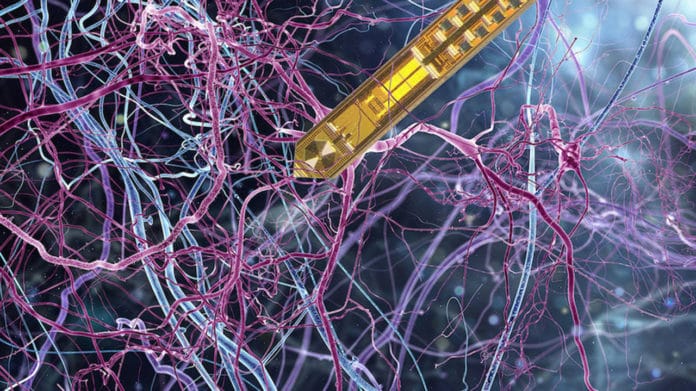MRI and spectroscopy currently being used to determine brain physiology, but their intrinsically low sensitivity limits the achievable spatial and temporal resolution.
In a new study, a team of neuroscientists and electrical engineers from Germany and Switzerland has introduced a new approach for probing brain physiology with unparalleled spatial and temporal resolution. They have developed an ultra-fine needle with an integrated chip that can detect and transmit nuclear magnetic resonance (NMR) data from nanoliter volumes of brain oxygen metabolism.
Scientists identified a technical bypass that bridges the electrophysical limits of contemporary brain scan methods. Their development of a capillary monolithic nuclear magnetic resonance (NMR) needle consolidates the versatility of brain imaging with the accuracy of an exceptionally confined and quick method to dissect the particular neuronal movement of the brain.
Principal investigator Klaus Scheffler said, “The integrated design of a nuclear magnetic resonance detector on a single chip supremely reduces the typical electromagnetic interference of magnetic resonance signals. This enables neuroscientists to gather precise data from minuscule areas of the brain and to combine them with information from spatial and temporal data of the brain´s physiology.”
“With this method, we can now better understand specific activity and functionalities in the brain.”
Scientists suggest that their invention could open up the way to discover new effects or typical fingerprints of neuronal activation, up to specific neuronal events in brain tissue.
The second principal investigator Jens Anders said, “Our design setup will allow scalable solutions, meaning the possibility of expanding the collection of data from more than from a single area—but on the same device. The scalability of our approach will allow us to extend our platform by additional sensing modalities such as electrophysiological and optogenetic measurements.”
Scientists are very confident that their approach may help demerge the complex physiologic process inside the neural networks of the mind and that it might reveal extra advantages that can give significantly more profound insights into the functionality of the brain.
Their approach is presented in the journal Nature Methods.
